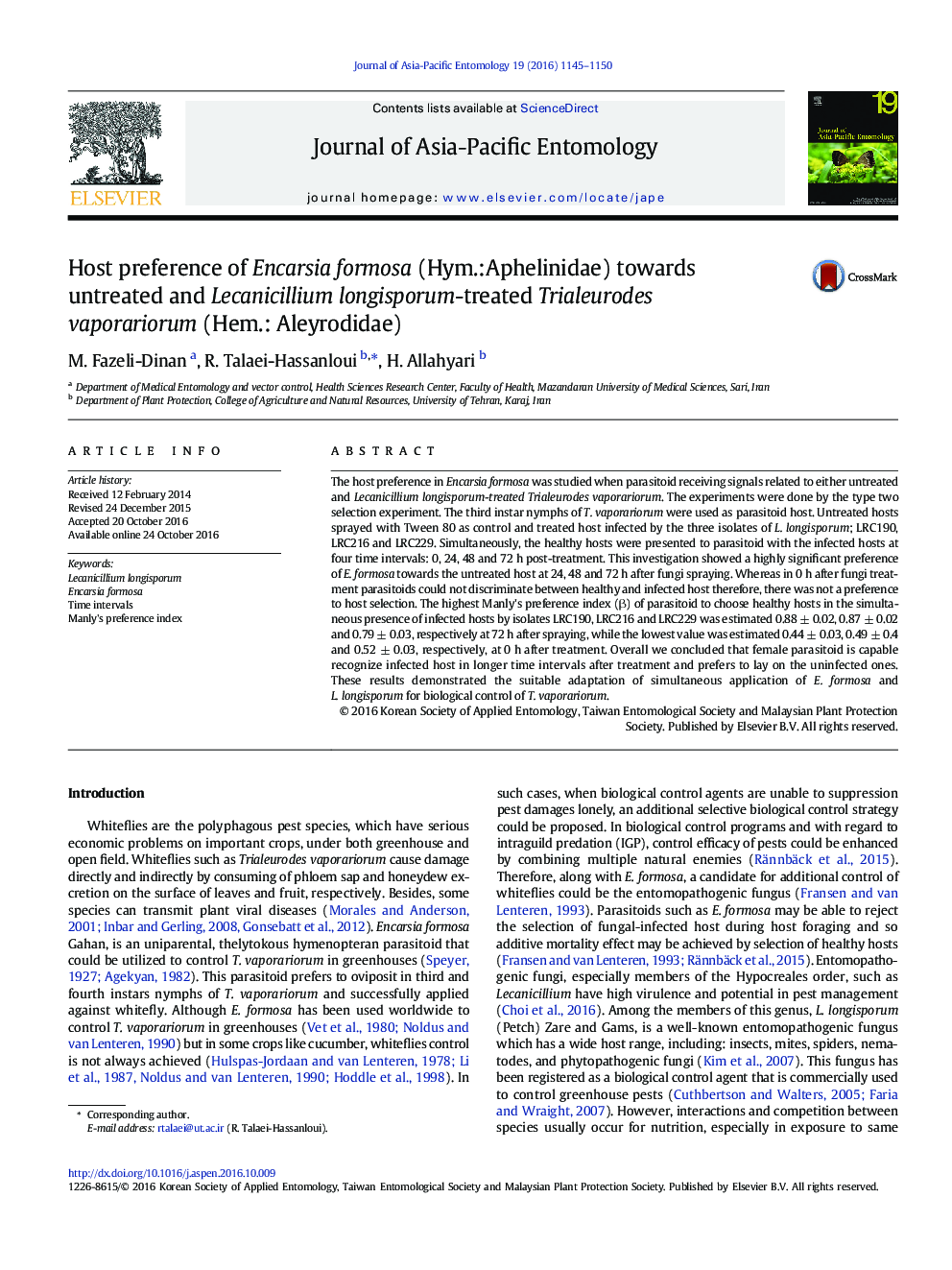| Article ID | Journal | Published Year | Pages | File Type |
|---|---|---|---|---|
| 4524353 | Journal of Asia-Pacific Entomology | 2016 | 6 Pages |
•We survey preference of female parasitoid vs. fungi-infected and healthy host.•Parasitoid can detect suitable and unsuitable host in tritrophic interactions.•Parasitoid release has direct connection to fungus time intervals after spraying.•Parasitoid and fungi can use in multi-species biological control programs.
The host preference in Encarsia formosa was studied when parasitoid receiving signals related to either untreated and Lecanicillium longisporum-treated Trialeurodes vaporariorum. The experiments were done by the type two selection experiment. The third instar nymphs of T. vaporariorum were used as parasitoid host. Untreated hosts sprayed with Tween 80 as control and treated host infected by the three isolates of L. longisporum; LRC190, LRC216 and LRC229. Simultaneously, the healthy hosts were presented to parasitoid with the infected hosts at four time intervals: 0, 24, 48 and 72 h post-treatment. This investigation showed a highly significant preference of E. formosa towards the untreated host at 24, 48 and 72 h after fungi spraying. Whereas in 0 h after fungi treatment parasitoids could not discriminate between healthy and infected host therefore, there was not a preference to host selection. The highest Manly's preference index (β) of parasitoid to choose healthy hosts in the simultaneous presence of infected hosts by isolates LRC190, LRC216 and LRC229 was estimated 0.88 ± 0.02, 0.87 ± 0.02 and 0.79 ± 0.03, respectively at 72 h after spraying, while the lowest value was estimated 0.44 ± 0.03, 0.49 ± 0.4 and 0.52 ± 0.03, respectively, at 0 h after treatment. Overall we concluded that female parasitoid is capable recognize infected host in longer time intervals after treatment and prefers to lay on the uninfected ones. These results demonstrated the suitable adaptation of simultaneous application of E. formosa and L. longisporum for biological control of T. vaporariorum.
Graphical abstractFigure optionsDownload full-size imageDownload as PowerPoint slide
